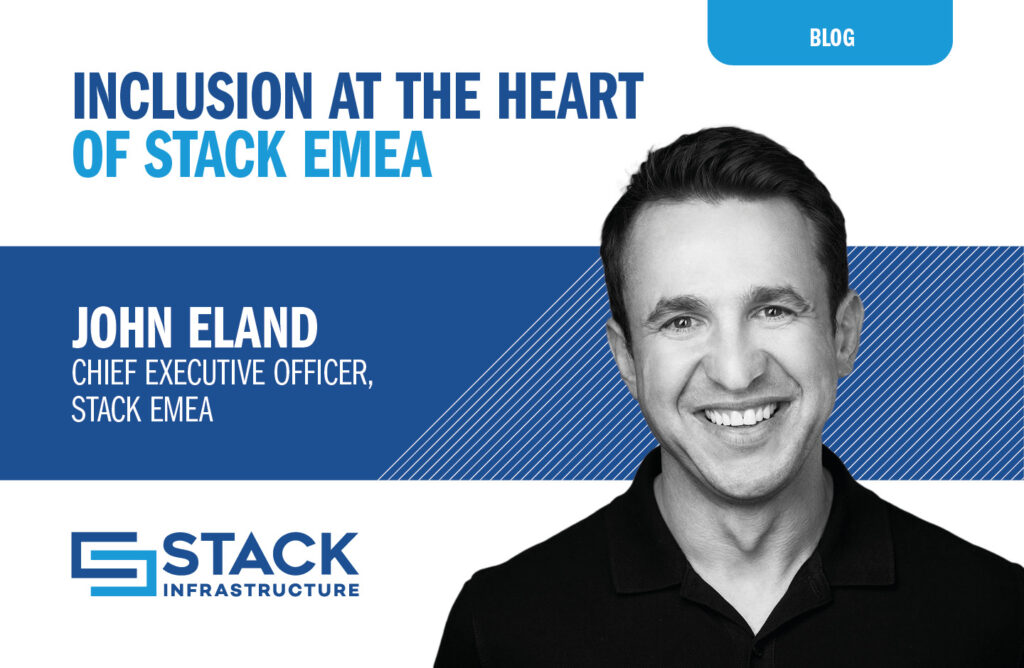Driving Sustainability in Portland with Energy Trust of Oregon

How partnering with a sustainability-driven nonprofit promotes environmental protection, business growth, and a new path forward
STACK INFRASTRUCTURE has made sustainability a cornerstone of our business. Not just because it’s good for the bottom line, but also because it’s good for our customers and the environment. It’s a core pillar of our broader power strategy, one that involves actively seeking opportunities for engagement directly with public utilities across the country.
In Oregon, STACK INFRASTRUCTURE has joined forces with the Energy Trust of Oregon (ETO) to help lead the charge.
Incentivizing clean energy
As public utilities and cities across the country move increasingly toward achieving their 100% carbon-free goals, they’re eagerly seeking support from local businesses and nonprofit organizations. For nearly 20 years, Energy Trust of Oregon has provided innovative cash incentive and contractor connection programs to help encourage customers to use less energy, generate renewable power, and protect the environment.
In addition to programs spanning residential and industrial/agricultural programs, ETO’s commercial program helps connect companies like ours with incentive programs funded by Oregon-based utility companies aimed at prioritizing the delivery of clean, affordable, and sustainable energy to 1.7 million utility customers in the region.
ETO partners with commercial facility developers and operators to collaborate on initial designs, establish sustainability and energy efficiency benchmarks, and uses monies granted by each utility to help offset the cost of “green” initiatives as businesses retrofit existing buildings or begin new construction projects.
Governed by the Oregon Public Utility Commission (OPUC) and a volunteer board of directors, every dollar ETO receives and invests in projects with commercial partners is accounted for in monthly, quarterly and annual financial statements and evaluated by a third party to help ensure energy savings and generation occurred at the expected level.
STACK and ETO
In the past, STACK INFRASTRUCTURE and ETO partnered to retrofit an existing data hall in our 24MW POR02A, lowering the facility’s energy consumption by nearly 380,000 kWh per year. We’ve recently completed construction on a new 4MW data hall at the Portland campus that will further expand both our client capacity and our commitment to sustainability
Unlike existing project enhancements in which ETO consults on various equipment and retrofit activities, new construction projects are more involved and require closer collaboration with the nonprofit’s team. The process involves three core phases:
1. Application submission
Like most incentive-based programs, this one began with an application process in which the developer submits a proposed project for consideration. In this instance, STACK provided ETO with a detailed plan for the new data hall, highlighting proposed capacity, projected energy expenditure, and go-to-market timeline. Once accepted by ETO, the project moves into phase two.
2. Initial design consultation and collaboration
The second phase is where the proverbial rubber meets the road. Here, ETO sustainability and design experts work alongside STACK’s operations and engineering teams to establish design parameters and specifications, all the way down to the power usage effectiveness (PUE) and the mechanical and electrical systems required to achieve it.
They’ll take the design and model both the projected energy consumption and a target savings benchmark based on a number of factors including the effect of historical temperature averages on hardware and systems, available energy providers, and the projected capacity growth of the facility.
The modeling process can take up to two months to complete, during which STACK provides ETO specs of the equipment we’re planning to buy and deploy for review against the PUE and other benchmarks.
3. Post-deployment audit
Incentive funds are finite, which means ETO has to ensure its investments are used effectively and in support of its core mission. In practice, this translates to a thorough post-deployment audit, during which ETO reviews the PUE and kilowatt savings benchmarks, compares the planned infrastructure purchases against what’s been stood up, and assesses whether we’re compliant with the goals and guidelines of the incentive program. Once the audit is complete and approved, ETO reimburses our purchases for the agreed-upon amount.
Saving customers money while saving the planet
Data centers are huge consumers of energy and as the number of data center facilities continues to skyrocket, so will the strain they collectively put on the public grid and undermine utilities’ efforts to embrace renewable and sustainable energy.
Partnering with ETO to devise a sustainable building and operations model for energy consumption is a unique and effective way to simultaneously support our own business goals, the needs of our customers, and the demands of the planet. Our relationship has helped STACK reduce our kWh usage by hundreds of thousands of units per year, while helping our customers achieve 1.2 PUE or less, significantly below the 1.58 industry average.
While the environmental impact of such savings is cause for celebration, the program has also produced more tangible benefits for STACK customers. Specifically, the improvements in PUE and reduction in overall energy consumption have helped STACK reduce its annual energy costs by more than $50,000 — all of which is passed is passed directly to our customers, giving back valuable resources they can put toward higher-value, business-building activities.
From our previous retrofit projects to the recent new build initiative, STACK’s partnership with Energy Trust of Oregon is paying big dividends for the business and the planet. More importantly, our previous successes have paved the way for future efforts in the local area and beyond. We’ve already enrolled our upcoming POR03 facility in the incentive program and continue to seek out similar opportunities in the other regions we serve for the good of our community, our customers, and our environment.
By Adam Michaelis, Director of Client Technical Solutions
November 25, 2020




